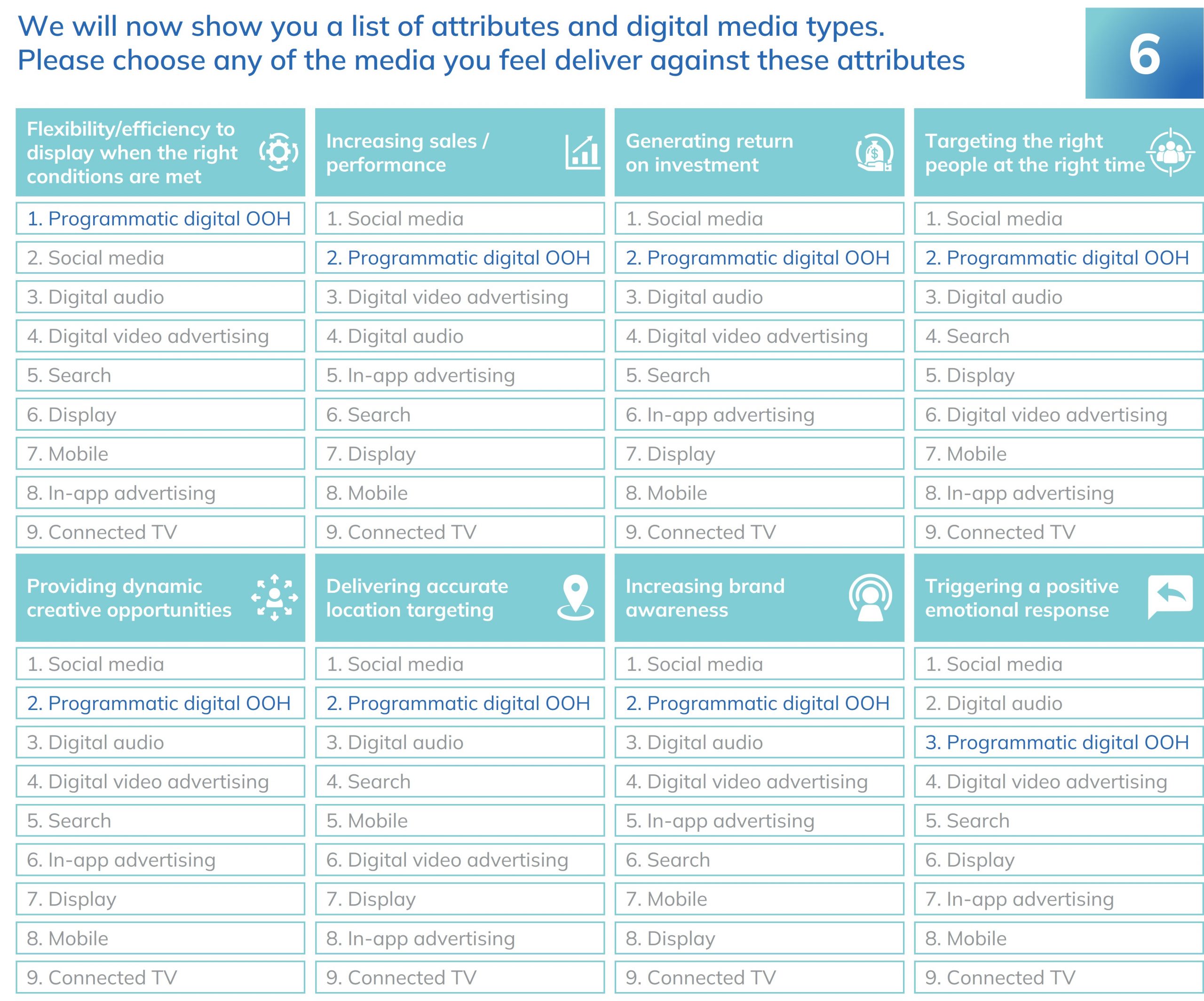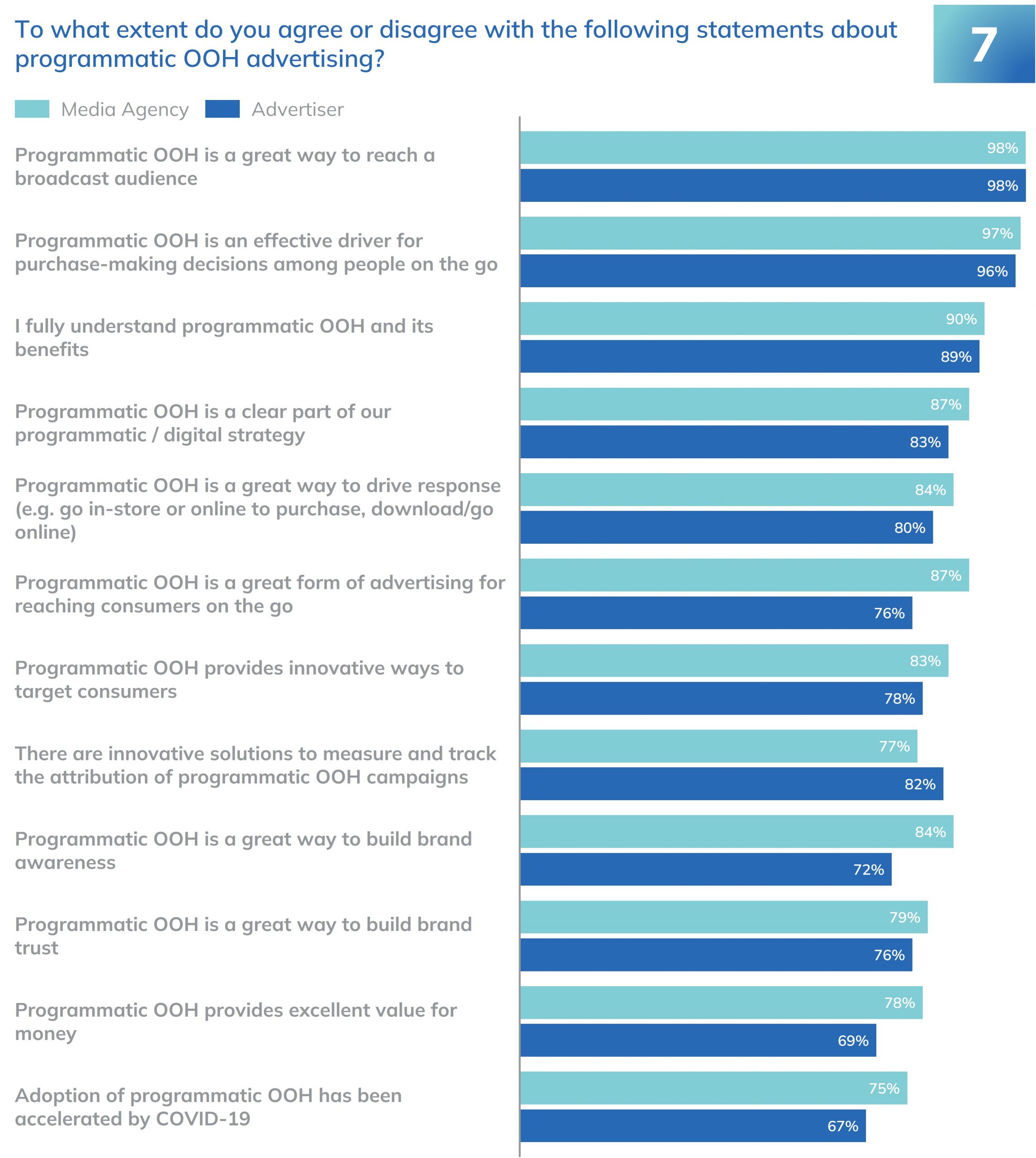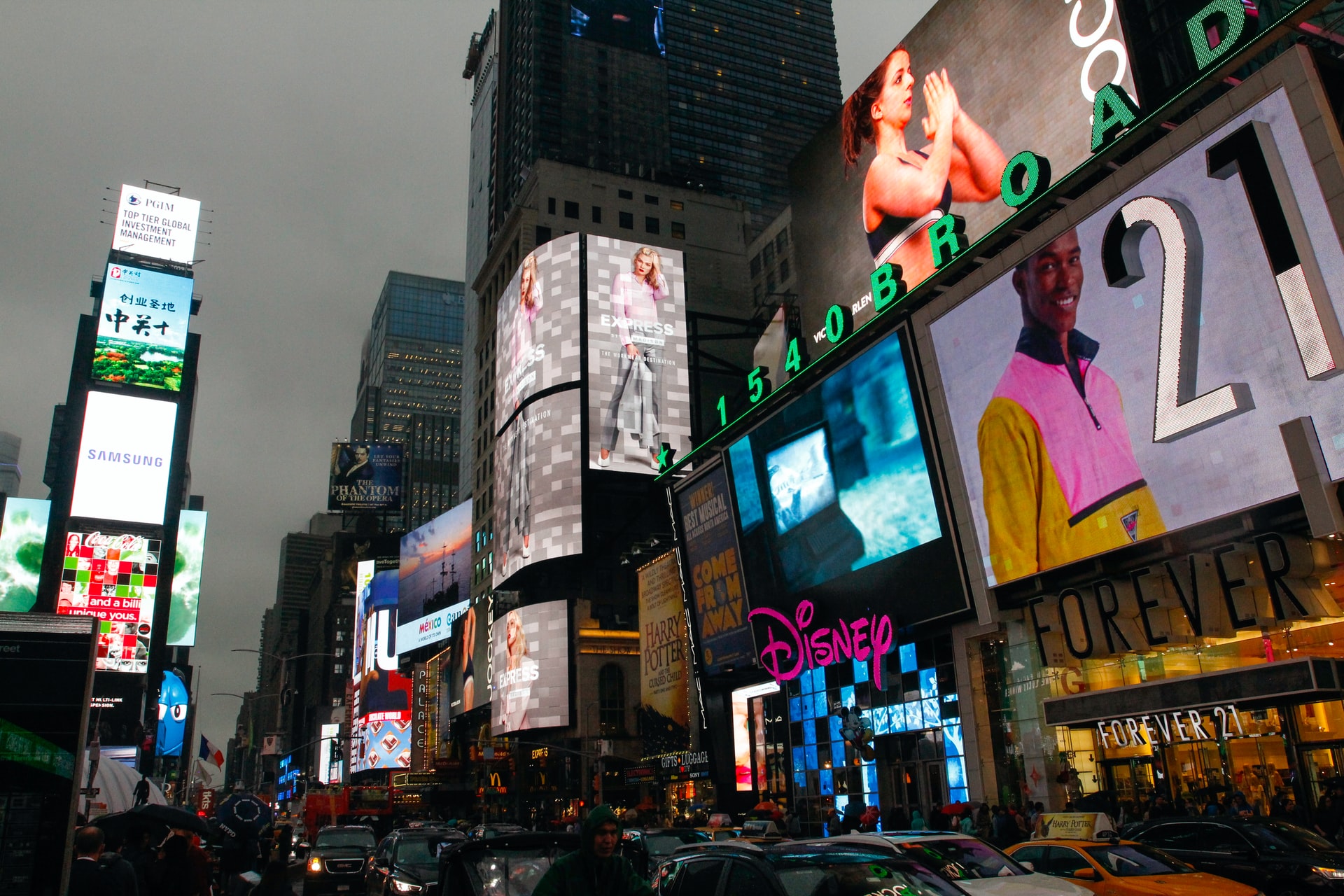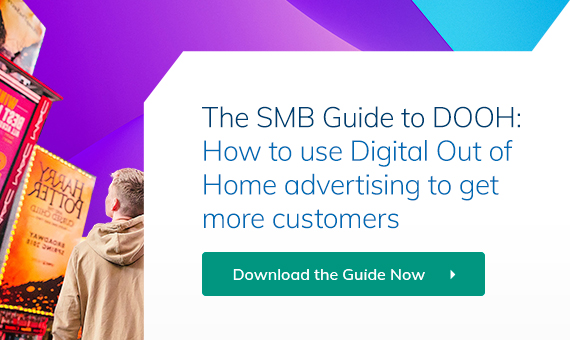When used with programmatic DOOH, digital billboard advertising provide a great mix of brand awareness and audience targeting.
Top DOOH advertising CEOs predict a return to pre-pandemic revenues this year as lockdown restrictions ease.
With more digital outdoor advertising space available than ever, it offers a great option for small businesses. They can take advantage of a return to normal life.
“While out-of-home advertising (OOH) may sound a little old-fashioned, digital out-of-home (DOOH) is on the rise – despite two years of lockdowns and travel restrictions,” says Lisen Zethraeus, CMO, DanAds.
The global DOOH advertising market is expected to grow.
According to Marketwatch, the figure will rise from USD$4.3 billion (£3.2 billion) in 2020 to USD$5.6 billion (£4.2 billion) in 2026.
The number of digital billboards, taxis, and place-based ads in the US has increased by more than 40% in the last four years. “Thanks to more self-serve ad sales, advertisers of all sizes will have better access to OOH. This will help the growth of DOOH even more.”
With a flood of advertisers exploring the possibilities of DOOH, how can you ensure your digital billboard ads stand out?
A good place to start is with the audience targeting options of digital billboards. This is one of the best benefits of programmatic DOOH.
This is based on a recent survey of over 1,000 senior agency and advertising executives.

(Image source: State of the Nation: Programmatic OOH 2021)
What Is Programmatic DOOH?
Programmatic digital out of home advertising, or pDOOH, means buying digital billboards and other media space. This is done through an automated bidding platform or programmatic exchange.
Programmatic DOOH platforms allow you to:
- Track and optimize your campaign with real-time metrics
- Automate bidding on ad inventory and streamline previously laborious buying processes
- State the conditions for buying inventory. Your ad shows up, and you pay only when these conditions are met.
This allows you to stop, start and optimize campaigns based on performance and external events while targeting audiences based on location, weather conditions, temperature, footfall data or even highway traffic.
Investment in digital OOH is also investment in more usable data.
A recent survey suggests 96% of senior advertising executives utilize data gathered from DOOH ads to fuel wider campaign creativity and engage with even more specified audiences. The more you target your digital billboard campaign, the more data you have on what works and what doesn’t – key insights which you can then use in future campaigns.

(Image source: State of the Nation: Programmatic OOH 2021)
As Toby Lett, Product Director at Xaxis, puts it, “The quality consumer insights it provides marketers enables them to implement highly effective media planning, reach audiences at the best time and place, and maximise campaign relevance to drive business outcomes.
Additionally, by allowing media owners to monetise hourly ad slots, programmatic capabilities will make pDOOH more accessible to brands regardless of budget size, boosting growth even further.”
Using anonymized mobile location data and other sources, like weather and demographics, helps advertisers see their target audiences clearly.
Read More: 3 Great Benefits of Programmatic DOOH for SMB Brands
The trade-off is that advertising on digital billboards can cost more than traditional printed billboards. This is true when we consider impressions, or the number of people who see your ad.
This raises an important question.
Digital Billboard Cost: Is It Worthwhile?
Digital billboards are more expensive than traditional billboards.
Recent research by PJ Solomon suggests that you’ll pay around $2-10 per thousand impressions for a static billboard ad. Typically, digital billboards cost between $5-32 per thousand impressions.
What advantages does this increase in price get you?
The types of audience you can access are what matters.
A traditional billboard ad will remain up permanently for a fixed period – regardless of whether it’s suited to the audience passing it at any given time.
This means you’re essentially paying for dead time, when the ad won’t be doing much for you.
By contrast, a digital billboard usually plays a series of ads on loop. If you use a programmatic buying platform, your ad will only show when certain conditions are met. These conditions can include things like foot traffic or temperature.
You may pay more for the ad space but you gain the potential to make a greater return on your investment.
How to Target Specific Audiences with Digital Billboard Advertising
Adopt a Location-Based DOOH Strategy
Place-based marketing is simply using the physical location of your ads to add contextual relevancy to their appeal. It’s why you’ll see ads for sports drinks at the gym or billboards signposting fast food drive-thrus on busy stretches of highway.
For small businesses in particular, location plays a huge role in drawing customers in. A billboard’s location can build brand awareness among target audiences in spaces they’re most likely to be found, provide directions to physical premises, or even encourage mobile or online interaction.
Read more: Four Reasons Why Place-Based Marketing Is the Way of the Future
By targeting digital billboards in particular spaces, you immediately gain access to certain types of audiences – and that’s before exploring any of the more advanced pDOOH capabilities. Think about where your target demographics are and when they would be most receptive to your messaging.
For example, UK online estate agency Purple Bricks launched a simple but memorable highly effective DOOH campaign advertising their USP – no commission on home sales – on major commuting routes.
This helped attract wealthier workers who were more likely to own a home to sell, as well as increasing recognition for the now instantly recognizable brand color scheme.

Source: facebook.com
According to recent research by PJ Solomon, you can expect to pay an average of anywhere from $2-10 per thousand impressions for a static billboard ad, and between $4.5-32 per thousand impressions for a digital billboard ad.
If you want to buy digital ad space programmatically by using a demand side platform to automatically bid on inventory that meets your own specified criteria, you’ll buy based on CPM. This is beneficial to advertisers because:
- Your OOH campaign forecasting is more accurate:buying based on impressions helps you gauge the reach of your campaign and strategize accordingly.
- You pay for performance: you know how much reach a billboard has before you buy it – you might pay a premium for city center billboards but you’re likely to get a better return on your spend thanks to increased foot traffic.
How Effective Is Billboard Advertising?
Do you have a product that would sell better under certain conditions? Think hot drinks when it’s cold, ice-creams when it’s hot or indoor craft equipment when it’s raining.
If so, you can use programmatic DOOH to specify that you only want space on electronic billboards where these conditions can be met.
This is a simple and effective way to sell consumer goods. eBay used this method successfully a few years ago. They ran a pDOOH campaign that advertised different products based on UK Met Office data.

Source: marcommnews.com
Use Proximity Triggers and Event-Based Messaging to Serve Hyper-Relevant Ads
Programmatic DOOH allows digital billboard ads to be triggered by both target audiences being in the proximity of specific digital signs and after specific real-world events.
If you’ve ever seen a drinks ad pop up in a sports stadium after a score, that’s this technology at work.
Due to its reliance on automated bidding, pDOOH is also a powerful tool for launching fast, reactive campaigns based around major events.
For example, a 2021 programmatic DOOH campaign by new Daily Fantasy Sports app SuperDraft was designed to fill a shortfall of signups for its BIG GAME Superbowl fantasy contest.
Using pDOOH to trigger ads in 20 different NFL markets – including the host city of Tampa – the ads capitalized on the excitement around the big game to drive last-minute awareness, app downloads and sign-ups for the contest. The DOOH ads were complemented by native mobile advertising, which sent users to a trackable landing page.

Source: thoughtleadership.ooa.org
The ads received 38.5M impressions in under three days, with $740,000 of extra revenue generated from the time the campaign launched.
Find the Right pDOOH Platform for You
A great pDOOH platform offers billboard locations across the country, direct links with media owners and real-time analytics for campaign optimization.
At The Neuron, we pride ourselves on our intuitive interface and single click processes, as well as our range of outdoor advertising inventory and our commitment to making DOOH accessible to small and medium sized businesses.
With real-time metrics including eCPM, number of playouts and campaign budget, The Neuron makes it easier than ever to optimize your out of home advertising whilst staying on top of your marketing budget.


